- Clone
- W18222B (See other available formats)
- Regulatory Status
- RUO
- Other Names
- PECAM-1, EndoCAM
- Isotype
- Rat IgG2b, κ
- Ave. Rating
- Submit a Review
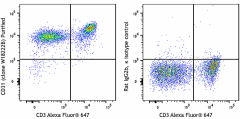
| Cat # | Size | Price | Quantity Check Availability | Save | ||
|---|---|---|---|---|---|---|
| 160202 | 500 µg | 329€ | ||||
CD31 is a 130-140 kD glycoprotein, also known as platelet endothelial cell adhesion molecule (PECAM-1) and EndoCAM. It is a member of the Ig superfamily, expressed on endothelial cells, platelets, granulocytes, monocytes/macrophages, dendritic cells, and T and B cell subsets, and is critical for cell-cell interactions. The primary ligands for CD31 have been reported to be CD38 and the vitronectin receptor (αv β3 integrin, CD51/CD61). Other reported functions of CD31 are neutrophil emigration to sites of inflammation and angiogenesis.
Product DetailsProduct Details
- Verified Reactivity
- Mouse
- Antibody Type
- Monoclonal
- Host Species
- Rat
- Immunogen
- Mouse CD31 transfected cell line
- Formulation
- Phosphate-buffered solution, pH 7.2, containing 0.09% sodium azide
- Preparation
- The antibody was purified by affinity chromatography.
- Concentration
- 0.5 mg/mL
- Storage & Handling
- The antibody solution should be stored undiluted between 2°C and 8°C.
- Application
-
FC - Quality tested
IHC-F - Verified - Recommended Usage
-
Each lot of this antibody is quality control tested by immunofluorescent staining with flow cytometric analysis. For flow cytometric staining, the suggested use of this reagent is ≤ 0.25 µg per million cells in 100 µL volume. For immunohistochemistry on frozen tissue sections, a concentration range of 5.0 - 10.0 µg/mL is suggested.It is recommended that the reagent be titrated for optimal performance for each application.
- RRID
-
AB_2876566 (BioLegend Cat. No. 160202)
Antigen Details
- Structure
- Ig superfamily, 130-140 kD
- Distribution
-
Endothelial cells, platelets, granulocytes, monocytes/macrophages, dendritic cells, T and B cell subsets
- Function
- Adhesion
- Ligand/Receptor
- CD38, αV/β3 integrin
- Cell Type
- B cells, Dendritic cells, Endothelial cells, Granulocytes, Macrophages, Monocytes, Neutrophils, Platelets, T cells
- Biology Area
- Angiogenesis, Cell Adhesion, Cell Biology, Immunology, Neuroinflammation, Neuroscience
- Molecular Family
- Adhesion Molecules, CD Molecules
- Antigen References
-
- Barclay AN, et al. 1997. The Leukocyte Antigen FactsBook Academic Press.
- DeLisser HM, et al. 1994. Immunol Today. 15:490-5.
- Newman PJ, et al. 1990. Science. 247:1219-22.
- Gene ID
- 18613 View all products for this Gene ID
- UniProt
- View information about CD31 on UniProt.org
Related FAQs
Other Formats
View All CD31 Reagents Request Custom Conjugation| Description | Clone | Applications |
|---|---|---|
| PE anti-mouse CD31 (PECAM-1) | W18222B | FC |
| Purified anti-mouse CD31 (PECAM-1) | W18222B | FC,IHC-F |
| Alexa Fluor® 488 anti-mouse CD31 (PECAM-1) Antibody | W18222B | FC |
| APC anti-mouse CD31 (PECAM-1) | W18222B | FC |
| PE/Cyanine7 anti-mouse CD31 (PECAM-1) | W18222B | FC |
| FITC anti-mouse CD31 (PECAM-1) | W18222B | FC |
| PerCP/Cyanine5.5 anti-mouse CD31 (PECAM-1) | W18222B | FC |
| Pacific Blue™ anti-mouse CD31 (PECAM-1) | W18222B | FC |
| PerCP/Fire™ 780 anti-mouse CD31 (PECAM-1) | W18222B | FC |
| Spark Blue™ 550 anti-mouse CD31 (PECAM-1) (Flexi-Fluor™) | W18222B | FC |
| Spark Blue™ 574 anti-mouse CD31 (PECAM-1) (Flexi-Fluor™) Antibody | W18222B | FC |
| Spark Red™ 718 anti-mouse CD31 (PECAM-1) (Flexi-Fluor™) | W18222B | FC |
Customers Also Purchased
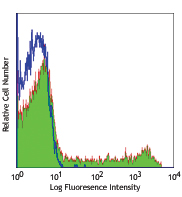

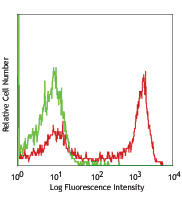
Compare Data Across All Formats
This data display is provided for general comparisons between formats.
Your actual data may vary due to variations in samples, target cells, instruments and their settings, staining conditions, and other factors.
If you need assistance with selecting the best format contact our expert technical support team.
-
PE anti-mouse CD31 (PECAM-1)

C57BL/6 mouse splenocytes were stained with CD3 Alexa Fluor®... -
Purified anti-mouse CD31 (PECAM-1)

C57BL/6 mouse splenocytes were stained with purified CD31 (P... 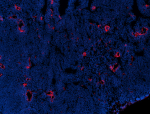
C57BL/6 mouse frozen lymph node section was fixed with 4% pa... 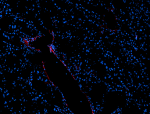
C57BL/6 mouse frozen liver section was fixed with 4% parafor... 
C57BL/6 mouse frozen spleen section was fixed with 4% parafo... -
Alexa Fluor® 488 anti-mouse CD31 (PECAM-1) Antibody

C57BL/6 mouse splenocytes were stained with anti-mouse CD3 A... -
APC anti-mouse CD31 (PECAM-1)

C57BL/6 mouse splenocytes were stained with anti-mouse CD3 A... -
PE/Cyanine7 anti-mouse CD31 (PECAM-1)

C57BL/6 mouse splenocytes were stained with anti-mouse CD3 A... -
FITC anti-mouse CD31 (PECAM-1)

C57BL/6 mouse splenocytes were stained with anti-mouse CD3 A... -
PerCP/Cyanine5.5 anti-mouse CD31 (PECAM-1)

C57BL/6 mouse splenocytes were stained with anti-mouse CD3 A... -
Pacific Blue™ anti-mouse CD31 (PECAM-1)

C57BL/6 mouse splenocytes were stained with anti-mouse CD3 (... -
PerCP/Fire™ 780 anti-mouse CD31 (PECAM-1)

C57BL/6 mouse splenocytes were stained with anti-mouse CD3ε ... 
C57BL/6 mouse splenocytes were stained with anti-mouse CD31 ... -
Spark Blue™ 550 anti-mouse CD31 (PECAM-1) (Flexi-Fluor™)
-
Spark Blue™ 574 anti-mouse CD31 (PECAM-1) (Flexi-Fluor™) Antibody
-
Spark Red™ 718 anti-mouse CD31 (PECAM-1) (Flexi-Fluor™)

 Login / Register
Login / Register 

















Follow Us